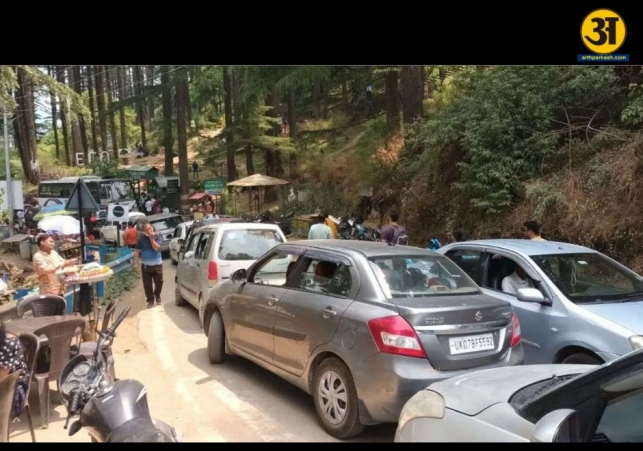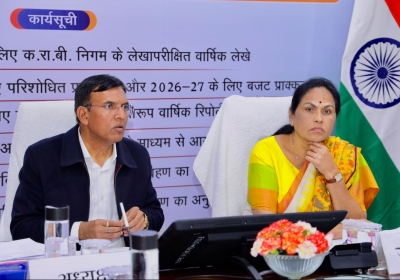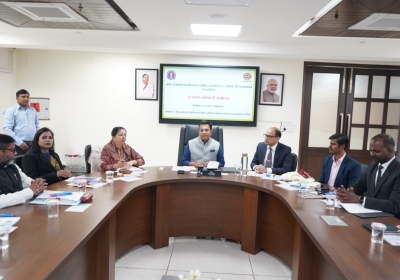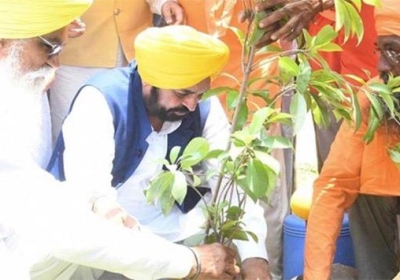
Tourist traffic in Uttarakhand delays aid, causes deaths
Uttarakhand traffic jams at tourist spots delay medical help, lead to deaths
During the summer tourist season, traffic jams are becoming a serious problem in Uttarakhand. The long queues of vehicles are not just causing inconvenience but also delaying emergency medical help. In recent days, two people died because they could not get to hospitals in time due to traffic.
On June 9, a 40-year-old man from Nainital died after his ambulance got stuck in a traffic jam near Kainchi Dham, a popular pilgrimage site visited by devotees of Baba Neem Karori. The man, Jagmohan Singh, was vomiting blood and needed urgent treatment. His ambulance was on its way to a hospital in Haldwani, but heavy traffic near the religious site delayed it. What should have taken two hours ended up taking more than five hours. By the time he reached the hospital, doctors declared him dead.
Jagmohan's family was heartbroken. His relative, Labhanshu Pinari, said that he could have been saved if they had reached on time. The traffic jam had cost him his life.
Just a few days earlier, on June 5, a similar tragedy happened in Mussoorie. A 62-year-old man named Kamal Kishore Tandon from Delhi fell ill while on a vacation. His family could not get an ambulance due to the crowd and jam-packed roads. They used their private car and were helped by the police, but even then, it took them more than an hour to travel less than 4 kilometers. The nearest hospital in Landour was close, but the heavy traffic made it impossible to reach quickly. When they finally arrived, doctors could not save him. His nephew, Arjun Kapoor, said they had lost valuable time.
These incidents have sparked anger and concern among locals and visitors. Every year, thousands of people visit Uttarakhand during the summer to escape the heat and enjoy the hills. However, the growing number of vehicles and poor traffic management is putting lives at risk.
Locals want better planning
People living in Uttarakhand say this is not the first time such deaths have happened. Every year, similar stories are reported during the tourist season. Residents like Prakash Dobhal from Dehradun say the government has not learned from past mistakes. Dobhal believes the state must improve its emergency response systems and traffic management to deal with the massive tourist rush. He also says the state needs better infrastructure that can handle the large number of visitors and pilgrims.
Social activist Anoop Nautiyal has also spoken out. He runs an NGO called Social Development for Communities. Nautiyal says one of the biggest problems is the inability of ambulances to move quickly through traffic. He has suggested using bike ambulances. These smaller vehicles can move through tight traffic spaces and reach patients faster. Nautiyal said that sometimes just a few extra minutes can make the difference between life and death. He added that we must ask ourselves if our systems are ready to save lives during such traffic problems.
Nautiyal pointed out that traffic jams in areas like Mussoorie, Nainital, Rishikesh, Joshimath, and along the Char Dham Yatra routes are common. He believes known bottlenecks in these regions should be fixed to avoid such issues. Better planning and quicker action can help save lives.
He also mentioned that there should be strict rules for managing traffic. Drivers often overtake in narrow spaces, which causes chaos. Roads should be maintained properly, and those breaking traffic rules must be punished. He said the state government is more focused on attracting tourists and pilgrims, rather than building the infrastructure to handle them.
Nautiyal emphasized that while tourism is important for the economy, it should not come at the cost of human lives. The goal should be to ensure that basic services like healthcare and emergency response are not affected by the tourist rush.
The situation in major tourist towns like Mussoorie and Nainital has become worse over the years. Narrow roads, poor planning, and unchecked growth in tourist numbers have led to major traffic issues. In these hill towns, once the roads are jammed, even emergency vehicles like ambulances and fire trucks cannot move.
Another major concern is the Char Dham Yatra route. Thousands of pilgrims travel to Kedarnath, Badrinath, Gangotri, and Yamunotri each year. While the religious journey is important, the roads leading to these places are often narrow and under-maintained. Traffic slows down, and in case of landslides or accidents, the situation becomes even more dangerous.
There are no proper emergency corridors in many of these places. Ideally, one lane should always be kept clear for ambulances and emergency vehicles. But during tourist season, even this basic requirement is ignored.
Local hospitals also face pressure. When tourists fall ill or meet with accidents, they are rushed to local health centers, which are not always equipped to handle emergencies. Some towns have just one small hospital, and during peak season, it becomes overcrowded.
Experts speak on the issue
Traffic experts and health professionals agree that Uttarakhand needs better planning. They say that tourism and safety must go hand in hand. According to Dr. Ravi Chauhan, a local physician in Rishikesh, “During summer and Yatra seasons, we see many cases where patients arrive late. The reasons are always the same—jammed roads and delayed ambulances.”
Dr. Chauhan believes that the government must act fast. Suggestions include setting up temporary emergency camps near tourist hubs, deploying bike ambulances, and building new roads or widening existing ones.
Tourism experts also say that instead of inviting more and more tourists, the state should set daily limits for places like Nainital and Mussoorie. This will reduce overcrowding and make it easier to manage emergencies.
Police departments too are under pressure. Traffic police struggle to manage the rush with limited staff. They often have to work extra hours, especially during long weekends and holidays. Better manpower, training, and equipment are needed.
While the government often promises better infrastructure, very little is seen on the ground. Projects move slowly due to lack of funds or delays in approval. Experts believe that unless there is strong political will and public awareness, the situation will not improve.
People also need to follow traffic rules. Over-speeding, illegal parking, and overtaking in narrow lanes are common sights in hill stations. Educating drivers and tourists is necessary.
There is also a need for emergency awareness campaigns. Tourists should be informed about nearby hospitals, helpline numbers, and safe routes. Local apps and tourist guides can help share this information quickly.
Civil society must come forward too. NGOs and citizen groups can work with local authorities to manage crowds, guide traffic, and assist in medical emergencies. It must be a joint effort.
Tourism is vital for Uttarakhand. It brings jobs, business, and development. But it should not endanger the lives of people. The recent deaths show how critical the situation is. Delayed ambulances, jammed roads, and lack of planning are costing lives.
The state needs better emergency systems, proper traffic control, and strong medical infrastructure. Suggestions like bike ambulances, strict traffic regulation, and daily tourist limits should be taken seriously.
As more tourists head to the hills each year, it is time to ask: are we ready to handle them safely? Are our roads, hospitals, and systems prepared? If not, more such tragedies may happen.
Saving lives must come before promoting tourism. It is high time the government, citizens, and tourists work together to ensure Uttarakhand remains not only beautiful—but also safe.





